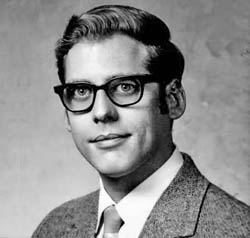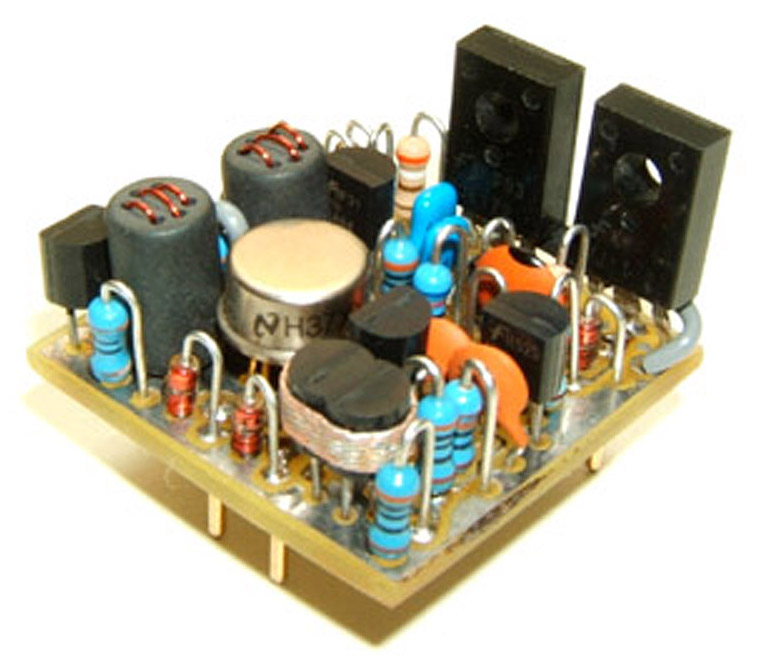The name “Jensen” is likely familiar to many in the pro audio industry as a hallmark of technical excellence, particularly with respect to transformers. And that will live on, especially in light of Jensen Transformers recently becoming a member of the growing group of companies in the Radial Engineering stable.
But the story of how that name came to prominence is assuredly not well known, and it’s a fascinating account.
Born in 1942, Deane Jensen grew up in Princeton, NJ. His Norwegian father, Dr. Arthur S. Jensen, was a physicist who earned his Ph.D. at the University of Pennsylvania, and he became an electronic-imaging expert who was awarded 25 patents, taught physics at the U.S. Naval Academy, and later worked for RCA Labs and the Westinghouse Defense and Electronics Center. In this heady atmosphere, Deane recalled Albert Einstein coming to their home to visit his father.
Deane followed the path to the University of Pennsylvania, majoring in physics as well as electrical engineering. He served as chief studio engineer for WXPN-FM, the school’s student-operated FM station, and after college, worked for several broadcasters in Baltimore and Washington DC as well as a recording studio in Camden, NJ before heading to California.
Accumulated Experience
By the mid-1960s, recording had advanced from just capturing a live performance to using studio processes that could not be replicated in live performances. The Beatles “Sgt. Pepper’s Lonely Hearts Club Band” album, released in 1967, was a prime example. During this period and into the early 1970s, the recording industry became highly competitive, driving improvement in technology.
The finest equipment used discrete transistor amplifiers, often in the form of potted modules. Although the first analog operational amplifier integrated circuit (IC) was introduced in 1963, their use was limited until inexpensive and easy-to-use ICs were introduced in 1968. But they didn’t “sound good” and years would pass before “op-amp” ICs worthy of pro audio applications were available. Likewise, most low-level audio transformers of the period were just adaptations of designs intended for industrial or communications use.
Against this backdrop, Deane moved to Hollywood in 1966, working as a systems engineer for Studio Electronics Corp. (later UREI), creators of the famous LA-2A and LA-3A limiters. He moved on to positions that furthered his technical and artistic understanding: engineering manager for Sicodim, a manufacturer of high-power lighting controls; systems engineer for Bushnell Electronics, which created custom consoles and complete studios; systems engineer and then VP of engineering for Quad-Eight Sound.
In 1969, Deane supervised the installation of a new Quad-Eight console in studio A at Wally Heider Recording Studios, for whom he was also consulting. By 1971, he interviewed Bill Whitlock, who he recommended to replace him as he left Quad-Eight.
Deane continued working for Heider, a legend in his own right as both a studio and remote recording engineer dating back to the big band era who worked with a “who’s who” of top rock/pop artists, such as the Grateful Dead, Fleetwood Mac, Crosby Stills & Nash and numerous others. In 1972, Heider sent Deane to API in New York, where he oversaw bus fixes, improvements, and final acceptance of a large recording console that API was building for Heider, and he also served on Heider’s recording crew for Bob Dylan’s live album “Before the Flood.”
This accumulated experience in the recording industry told Deane that audio transformers often were the root cause of “bad sounding” mixing boards and audio systems. He decided to embark on a quest to fix the shortcomings, starting with transformers. Initially, his development lab and office was his apartment in Hollywood.
Ed Reichenbach, who supplied transformers to Quad-Eight, had been building made-to-order transformers since the 1940s for Altec, Langevin, Electrodyne, and others, and Deane used these designs as his starting point. He became obsessed with how audio transformers interacted with system electronics, and began research to solve the “bad sounding” problems.
In the meantime, he’d also started optimizing audio operational amplifier designs while at Quad-Eight, and after leaving, continued to work on an improved design that he eventually called the 990. He completed the design in July of 1979, and his paper describing it was published in the AES Journal later that year.
In 1981, he was awarded a patent for the inductive emitter degeneration feature of the 990. The amplifier set new standards for its combination of low noise, low distortion, slew rate, stability, and high output drive capabilities. When Deane published the circuit, he intentionally made the patent public domain, an indication of his dedication to furthering the state of the art.

















